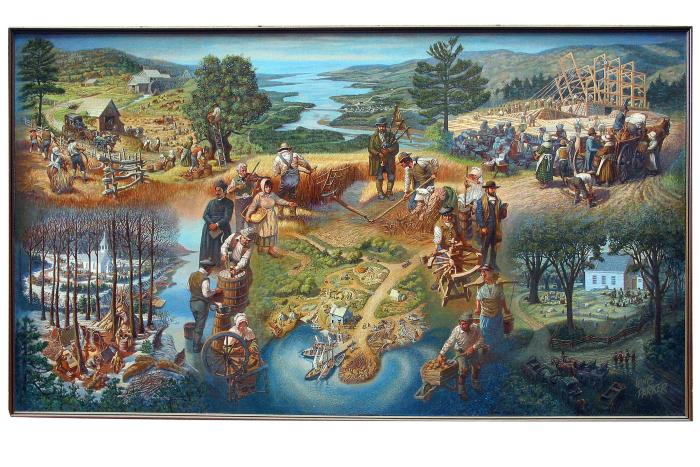Scots at Mabou - 1830 to 1850
X.114.13
This mural is set between 1830 and 1850, approximately 50 years after the Scottish first arrived in Cape Breton in the late 18th Century. The Scots were the first to practice commercial agriculture in Cape Breton, and much of the imagery in this mural is organized around this theme. Mabou is a rich agricultural area, which is illustrated by depictions of a gristmill and apple picking in the upper left. Wheat threshing, butter churning and wool spinning are shown in the centre, and barn raising in the upper right. The scene in the upper left depicts the stagecoach to Port Hawkesbury, which is significant because Port Hawkesbury served as a major transportation hub for rail and ferry services to the mainland, before the Canso Causeway was built.
The painting depicts the settlement of the Scots along religious lines. A Catholic Church and priest in shown on the left half of the mural whilst a Presbyterian Church and minister are shown on the right half. Lewis Parker based many of the figures within the painting on people he knew within the community at the time, such as the woman sowing seeds, which was based on the Sydney nutritionist Louise White.
In the lower left, a Mi’kmaq winter camp is portrayed, which suggests the increased trade activity between Aboriginal and settler communities. Here, the Mi’kmaq are dressed in peaked caps. This traditional headwear is unique to the Mi’kmaq and often beautifully adorned. The peaked cap was worn as early as 1791 but is thought to be a post contact item of clothing. The introduction of European trade materials allowed for greater artistic innovation in the design and decoration of these hats.
